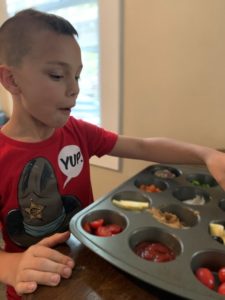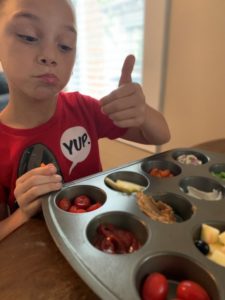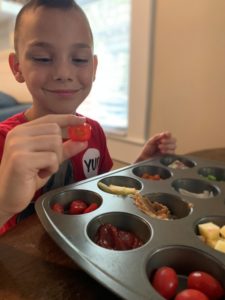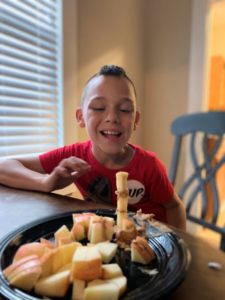Tips for the Quarantined Picky Eater
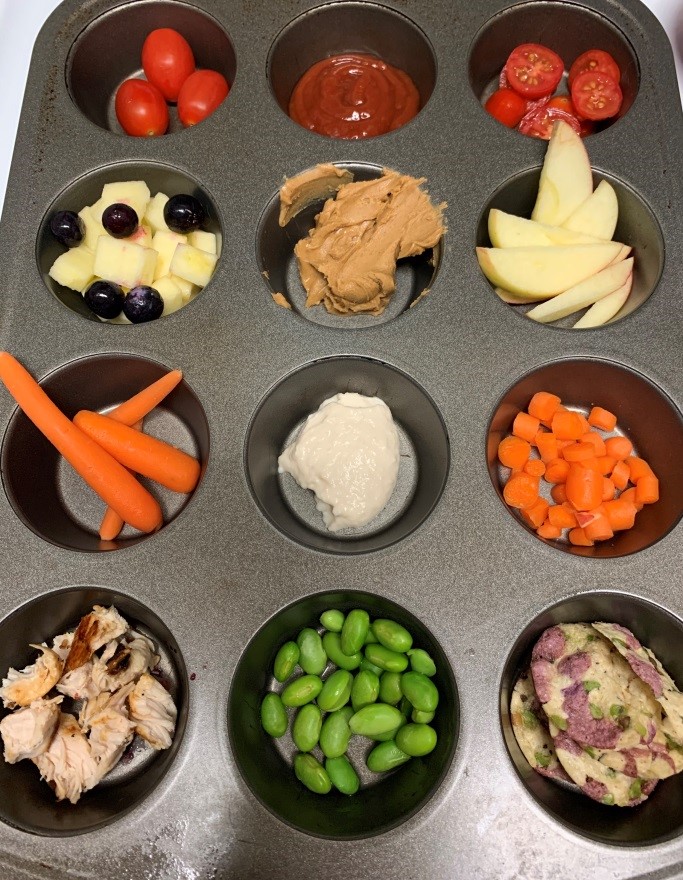
Back to physical health resource hub
This blog post was written by one of our outpatient clinicians. All Brooks outpatient locations are currently open and we are also accepting telehealth appointments. Please call our Central Intake Unit at (904) 345-7277 (option 3) to schedule your telehealth visit.
Children crying, parents frustrated, food thrown across the table and tempers flaring. Unfortunately, this is often described as just another typical mealtime for the family of a picky eater. Trap them at home for all their meals and limit access to their preferred foods during quarantine, and emotions can reach an all time high. If you have concerns that your child is losing weight, may be malnourished or appears to be in pain, it’s important that you communicate with your child’s pediatrician or feeding team. Regardless of whether a picky eater is just picky or a true feeding disorder is present, here are some tips to help you get through quarantined mealtimes.
- Limit snacking: Make sure that your child isn’t snacking prior to mealtime. Generally, we suggest two hours, but you know your child best. We don’t want him or her to fill up on snacks and then not eat dinner with the family.
- Set the stage: When learning something new, children require time and space to focus. Try to limit distractions- turn off the TV and sit at the table at regular mealtimes. Some children may not be used to this, but do your best to eliminate the roaming and eating. We can do this by using visuals, timers and even play with your food (remember those mashed potato volcanoes?). Make sure other family members are held to the same standard as well.
- Use choices to empower: Invite your child into the kitchen during meal preparation. By touching and smelling these new foods, he or she will be more inclined to taste or eat it at dinner. Let them decide how they want to try the food. Do you want it hot or cold? With cheese or without? On top of crackers or dipped in applesauce? Try changing the qualities of the food by doing one of the following:
- Try it in mashed or puree form- these can be a fun finger painting activity too.
- Add cheese to make it gooey (add pepperoni and make a pizza).
- Mix it with a preferred food to make a fun casserole.
- Add some sugar, salt or spices to change the flavor.
- Boil it to make it very soft.
- Chop it into cubes and use it to build something.
- Dip it in ketchup or a favorite sauce.
- Put it into a smoothie with your favorite fruits.
- Chop it up and add it to muffins or pancakes.
- Arrange the food on the plate to make some art.

- Portion sizes: Make sure to keep putting new foods on their plate, but keep the portion sizes small at first. This takes away the pressure of having to eat so much and encourages tasting and touching. A great way to do this is with a small muffin tin- put a different food in each muffin spot, alternating preferred and non-preferred foods.
- Be a Model: Remember, if you aren’t eating your fruits and veggies, why would your child do it? Show them what you do when you are hesitant about a food or don’t like something. Some examples include:
- “This doesn’t smell very good, but I am going to taste a little bit to see if I like it.”
- “I don’t like how plain broccoli tastes, but when I add a little salt I think it tastes better.”
- “This is too stringy for me. I’m going to cut off the stringy pieces.”
- Sensory exposure: When picky eating is related to sensory differences, it can put families in a very tough spot. Often times, gagging or throwing up occurs. Just remember, exposure is easiest when following this hierarchy:
- Non-preferred food on the table or plate > Touching with fingers > Smelling > Touching to lips > Touching to tongue/licking > Biting and spitting out > Chewing a spitting out > Eating
- If your child begins to gag or vomit, take a step or two backward and build consistency over a several days before moving on to the next stage.
- CELEBRATE! Remember that children need lots of encouragement. Make it fun by creating a reward chart or “levels” to motivate them to keep trying new things. Don’t forget to celebrate the small victories including touching a new food, not crying at the table and using words instead of just saying no. The whole idea is to keep mealtime fun and positive while encouraging your child to try something new.
- Remember you’re not alone: Check out the American Speech Language Hearing Association (ASHA)’s video series on how to help picky eaters : https://www.asha.org/bhsm/Picky-Eating/
- On Instagram, @autism.nutritionist and @chikidsfeeding provide more suggestions to expand your child’s diet.
- Amanda Vogelsong, MSED CCC-SLP is a pediatric speech language pathologist certified in the CAN-EAT Approach to pediatric feeding, founded by Krisi Brackett MS CCC-SLP. The CAN-EAT Approach is a multidisciplinary feeding intervention to children using combined medical, nutritional, motor, and behavioral approaches.
